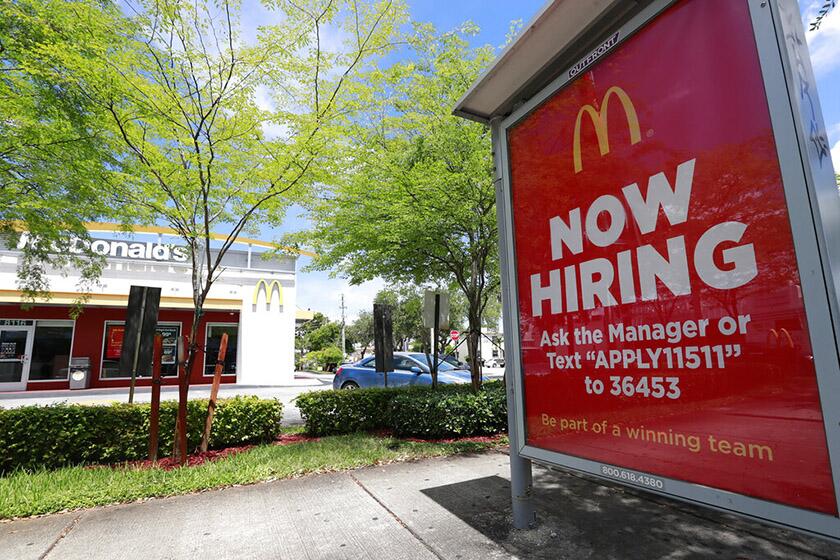For Many, the Bull May Arrive Too Late
The nature of severe bear markets is that, by the time they’re done, there isn’t an investor left who hasn’t been deeply humbled -- including those who, near the end, come to believe the bear will reign forever.
Early last week, when the headlines noted that the market’s losses had reached the worst levels of any decline since the late-1930s, some analysts dutifully trotted out new “how low can it go” numbers for the Dow Jones industrial average. Would 6,000 do it? Maybe 5,000? One estimate came in at 777, with a forecast for an accompanying U.S. economic depression.
That was all it took for the market to demonstrate, once again, that it has no intention of being so predictable. From its five-year low of 7,286.27 on Wednesday, the Dow zoomed 247.68 points on Thursday and 316.34 points on Friday, for a two-day surge of 7.7%.
To put that gain in perspective, it’s equivalent to the interest income a 10-year Treasury note will pay over two years.
But it will take a lot more rallies like those to put a stake in the heart of this bear. And for many investors and companies, it may be too late. Some significant, if unmeasurable, portion of the psychological and financial damage that has been done now is irreversible.
Many individual stocks have been reduced to virtual irrelevance, their prices so low that they might as well be lottery tickets: You figure they’ll either pay off in a big way, or, more likely, you’ll just throw them away.
This had been the story of technology and telecom, but it has now become a market-wide phenomenon. AMR Corp., the parent of American Airlines, closed at $3.70 a share on Friday. Calpine Corp., which owns and operates electric power plants in 23 states, trades at $2.49 a share. Ford Motor Co. fell as low as $6.90 last week before clawing back to $8.32 by Friday.
“I don’t think I’ve ever seen this many companies” at these price levels, said David Dreman, head of Dreman Value Management in Jersey City, N.J., and a veteran “value”-style investor.
In the Nasdaq market alone, 60% of the 3,800 listed stocks now trade below $5 a share, Nasdaq Chairman Hardwick Simmons lamented last week at the Security Traders Assn. annual meeting in Boca Raton, Fla. About 500 Nasdaq shares are under $1, he said.
*
Iffy Fundamentals
Serious investors know, of course, it isn’t the nominal dollar value of a stock that counts. It’s what is behind that price in terms of assets, earnings power and other fundamental measures.
But when shares of once highly regarded firms fall into or near penny-stock range, the fundamentals can become unreliable. People are forced to question what they thought they knew about a company.
That is true in part because a low share price can destroy a firm’s chances of getting the financing it needs to operate its business. The market’s verdict on a company, as reflected in its stock, can become self-fulfilling.
“I think it’s fairly safe to say that most of these stocks under $5 aren’t going to come back,” Dreman said.
But he said he also is reminded of the story of famed investor Sir John Templeton. “When war began in Europe in 1939, [Templeton] borrowed money to buy 100 shares in each of 104 companies selling at $1 a share or less, including 34 companies that were in bankruptcy,” according to the John Templeton Foundation’s Web site. It was the beginning of an investing career that eventually would place Templeton in the pantheon of the world’s top stock pickers.
*
Some Will Win Big
Unquestionably, some investors are going to reap big profits buying depressed stocks this time around, too. In a decline as brutal as this one has been, with the Standard & Poor’s 500 index still down 45% from its March 2000 peak, it’s inconceivable that every stock sale of the last two years has been well-informed.
In other words, some investors will be shown to have sold stocks too low, just as others bought stocks too high in the madness of the bull market.
But identifying long-term winners among beaten-down stocks, especially those that trade in single digits, looks simple only after the fact. Even if the bear market is ending -- a big if, with war looming and the global economy struggling -- the issue is what kind of market will follow.
Most investors probably would prefer a new bull run in which prices rise at a steady pace, perhaps 10% a year, on average. And precisely because that’s what most people might want, the market is unlikely to be so accommodating.
Many single-digit stocks that now arguably are undervalued could quickly snap back to levels at which they would be fairly valued or even overvalued. The rebounds could occur too fast for most investors to get on board -- shades of the technology rally of late last year.
At best, the stocks might then become dead money for a long time. That was the experience of many blue-chip shares in the late 1970s, after the market rocketed in 1975 following the 1973-74 decline.
At worst, sharp rebounds in low-priced shares could rapidly give way to renewed declines, as companies’ fundamentals deteriorate. Shareholders of Lucent Technologies Inc. know how that feels. Despite four rallies this year that were significant in percentage terms, Lucent stock has continued to slide. It closed at a record low of 58 cents on Friday after the firm warned of another quarterly loss.
Perhaps the biggest question facing the market overall is whether many potential long-term investors have simply tuned it out, permanently. That is often the legacy of devastating market declines: People stop caring about stocks altogether.
When apathy is widespread, it can leave the market largely in the hands of traders. That, in turn, can make for plenty of excitement day to day, but it isn’t a prescription for a lasting new bull market.
*
(BEGIN TEXT OF INFOBOX)
Lottery-ticket stocks?
Shares of some big-name companies have fallen to levels that make them akin to lottery tickets: At these prices, either they’ll pay off big or they’re throwaways. Bull Ticker market Fri. Pctg. Stock symbol peak close decline Vitesse Semiconductor VTSS $106.13 $0.81 -99% UAL (United Air) UAL 98.00 1.73 -98 Charter Communications CHTR 26.31 1.05 -96 Calpine CPN 56.99 2.49 -96 Sun Microsystems SUNW 64.31 2.77 -96 Fleming FLM 37.30 4.15 -89 AT&T; Wireless AWE 35.25 4.06 -88 AMR (American Air) AMR 43.75 3.70 -92 Six Flags PKS 40.25 3.30 -92 Charles Schwab SCH 50.17 8.85 -82 Source: Bloomberg News
*
Tom Petruno can be reached at tom.petruno@latimes.com. For recent columns on the Web, go to www.latimes.com/petruno.
More to Read
Inside the business of entertainment
The Wide Shot brings you news, analysis and insights on everything from streaming wars to production — and what it all means for the future.
You may occasionally receive promotional content from the Los Angeles Times.










